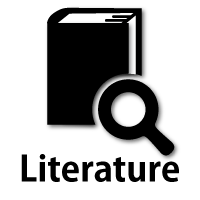Non-hereditary Myopathies
Endocrine myopathies
1. Diseases of the thyroid gland
(1) Hyperthyroidism
Patients with hyperthyroidism, particularly those with chronic disease frequently present with a moderate degree of weakness and atrophy of proximal muscle groups. Histopathological findings in muscle tissue include a variety of non-specific changes, such as increased number of mitochondria (Engel, 1966a), type 2 fiber predominance (Ianuzzo, 1977), indistinct striation, nuclear clumps, giant mitochondria, vacuole formation, and lipofuscin deposition (Korenyi-Both, 1981). It is hypothesized that these changes are secondary to enhanced mitochondrial function caused by excessive stimulation by thyroid hormone and abnormalities in oxidative phosphorylation.
Hypokalemic periodic paralysis is a complication of hyperthyroidism that is predominantly observed in Oriental men. A genetic background has been implicated as a causative factor, although cases have been reported in western countries in recent years. The pathophysiology is attributed to enhanced function of the muscle Na+/K+ATPase and suppression of the inwardly rectifying potassium channel (Kir 2.6) (Falhammar, 2013).
(2) Hypothyroidism
Hypothyroid myopathy presents with proximal muscle weakness that may occasionally be associated with myalgia. Mounding phenomenon (brief elevation of the muscle surface after a light tap) and grip myotonia can occur in some patients. Pseudohypertrophy of the muscle may also be observed (Hoffmann syndrome) (Fig. 56).

Fig.56
Hypertrophy of the muscles is noted in a patient with hypothyroidsm associated with muscle weakness. Muscle biopsy showed a moderate degree of myopathic change.
Concomitant cretinism and pseudohypertrophy of muscles may occur in children with hypothyroidism (Kocher-Debre-Semelaigne syndrome). Modi (2000) reported that muscle biopsies obtained in 15 patients with hypothyroidism showed cores at the center of muscle fibers and myoedema in the interstitial tissue secondary to the deposition of glycosaminoglycans and collagen.




